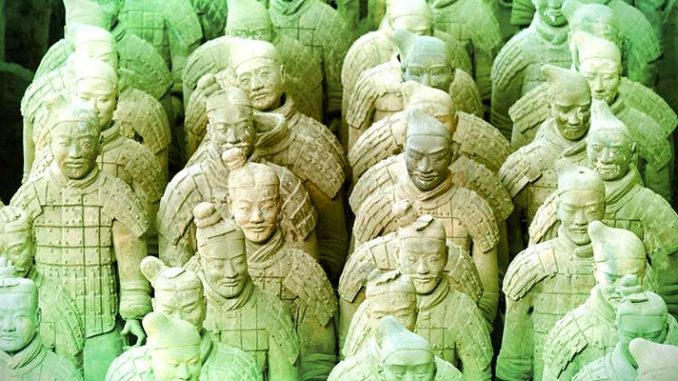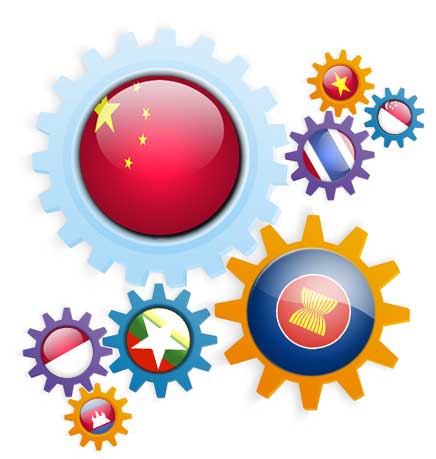
After a decade of silence, the South China Sea (SCS) conflict has once again arisen to the top of the East Asian security debate. This conflict is in many ways a litmus test of China’s relations with ASEAN and its member states. It is a conflict embedded in, and a manifestation of, the overarching relations. If the two sides cannot manage the SCS, what is then left of two decades of positive engagement under the umbrella of Soft Power and Constructive Engagement?
Despite recently being paid much attention, the current situation in the SCS is not a new one. In the early 1990s the area was predicted, in particular by US analysts, to emerge as a future perpetual conflict. At first glance, the current situation might look like a return to the 1990s. However, when looking closer, it is clear that this is not the case. Major changes have happened in the relations between China and ASEAN, as well as in the regional system since the early 1990s. The overall relations between the two have been mutually positive and constructive, not least in the economic sphere transforming innumerable aspects of the region’s political, economic, social, and security dynamics. All these transformations have not vanished in an instant, but continue to affect how the actors behave towards each other, including in the SCS.
Soft Power and Constructive Engagement
One of the most important factors behind the question of how the relations between China and ASEAN have developed since the end of the Cold War has been the two sides’ attempt to tap into their soft power resources when approaching each other. China has been trying to counter the image of a ‘China threat’ in Southeast Asia by (re)shaping preferences in the region through the use of soft power diplomacy, while in parallel ASEAN and the Southeast Asian nations have been pursuing their own “constructive engagement” strategy towards China, attempting to get China to engage and enmesh it into the regional order and convince it to accept some regional norms and practices, such as multilateral engagement and the ‘ASEAN way’.
But no consensus exists on how to define soft power with regard to the Chinese soft power discourse. Soft power in a strict sense, defined as ‘the ability to get what you want through attraction rather than coercion or payments’ and ‘the ability to shape the preferences of others’, 1 is particularly problematic to apply in the Chinese context. There are several reasons for this, including that the economic power resources are a fundamental feature of China’s power and central to the success of its diplomacy and its attraction (this is in Nye’s view of hard power), that the Chinese leadership is the term as they see fit when they think it benefits the building of a powerful China, and as a separate discourse on what soft power is has emerged in China (“Soft Power with Chinese Characteristics”). I do not intend to solve this problématique definition in this article, but I simply will focus on the forms of soft power that is accepted and adopted by the Chinese and Southeast Asian leaderships; a country’s attractiveness is at least partly in the eye of the beholder.

Cooperation, optimism and the institutionalisation of peaceful relations
In the early 1990’s China pursued a new post-Cold War strategy, characterised by its “good neigbourhood” policy, aiming to turn Southeast Asia into a showcase of its “peaceful rise” strategy. At the same time, ASEAN did pursue a diplomatic campaign to engage rather than isolate China. Thus, there was a reciprocal process between ASEAN’s ‘constructive engagement’ strategy and China’s move to ‘soft power’ diplomacy to counteract the perception of China as a threat. This rapprochement was to become a long term identity altering process for both parties, whom have reinterpreted their interests and transformed their behaviour towards each other. The rapprochement is fundamental for the understanding of why there have been attempts to manage their relations in a constructive and peaceful way and why the relations have developed in a positive direction, including with regard to the South China Sea. 2
Over time, in particular since 2000, China has moved beyond being a participant to becoming a proactive actor in multilateral settings. The underlying Chinese logic is that an understanding of China and its benign intensions will make the Asian actors change their perceived interests and behaviour in a direction that is favourable to China. The move towards, and acceptance of, multilateralism did over time become institutionalised in the way preferred by ASEAN.
The Chinese acceptance of multilateralism and institutionalisation of peaceful relations have together created a structural framework with forums, dialogues, and accepted diplomatic norms and practices. The institutionalisation was an important part of ASEAN’s engagement of China and served to increase its stakes in regional peace and stability. Moreover, it did assure that the ‘China threat’ did not become a self-fulfilling prophesy. The long term objective of engaging China aimed ‘to lock China into regional multilateral institutions, which did not only moderate but also gradually transform Chinese regional behaviour’ 3 had been successful: China’s behaviour did become more moderate, and it became accustomed to, and compliant with, engagement in multilateral forums. Moreover, China accepted the ‘ASEAN-way’ as the diplomatic principle and did start to take its neighbours’ interests into account. This was a reciprocal process between China’s ‘soft power diplomacy’ and ASEAN’s ‘constructive engagement’ policies.
During the same period, due to the good relations and the Chinese acceptance of multilateralism including accepting to engage ASEAN as a group, the SCS from an area where the common assumption among analysts was that China would behave aggressively, and that the area was set for perpetual conflict. Nevertheless, from the mid-1990s there was a de-escalation in the SCS conflict. A key point was China’s declaration prior to the 1995 ASEAN Regional Forum (ARF) that it was willing to discuss the Spratlys in a multilateral setting. Two years later, the SCS conflict was even put on the agenda at the ARF. This was crucial for the process leading up to the 2002 “Declaration on the Conduct of Parties in the South China Sea”.
Chinese new assertiveness
In 2007 the situation changed, as China’s pursued a more assertive foreign policy. Most concretely, China has been increasing its military reach, consolidating its jurisdictional claims in the SCS, and pursued a more hard line policy to undermine the claims made by other states. With the underlying reasons being traceable to China’s increased capabilities and enhanced confidence together with unabated nationalism and a growing frustration with outside interference, much of China’s soft power legitimacy was soon undermined. The legitimacy was further weakened in 2010, as there was a political and military provocations between Washington and Beijing as China allegedly described the SCS as a ‘core interest’ akin with Tibet and Taiwan, and held military exercises in the area. The tensions escalated further as China was more actively asserting its claims.
This said, it should be emphasised that China’s new assertive stance has not come as a shock for ASEAN (as opposed to many in the West). ASEAN members had not been deceived by the Chinese ‘charm offensive’, as some analysts has suggested. Rather, to cite Dewi Fortuna Anwar, the ASEAN members ‘were and continue to be fully aware of both the inherent promises and dangers that China present’, and it continues to believe ‘that the best course of dealing with China … is to engage and integrate it fully into the regional order’. 4

Mixed signals from Beijing
In the last three years, there have come mixed signals coming from Beijing. On the one hand, steps have been taken to moderate China’s approach. China has accepted guidelines on how to implement the 2002 Declaration of Conducts suggested by ASEAN. A diplomatic offensive to convince the world of China’s peaceful intentions has been initiated, including the publication of a white paper on 6 September 2011 reaffirming that China will follow Deng Xiaoping’s guidance and shelve the disputes in the SCS to work for joint development.
On the other hand, China has worked to divide ASEAN, persuading Cambodia, Laos, Myanmar and Thailand to not tackle SCS disputes together. China’s trustworthiness can also be questioned. For example, after the 2012 standoff at the Scarborough Shoal between the Philippines and China, China failed to follow through on a verbal agreement of a mutual pull-out. Instead, it roped off the mouth of the lagoon to prevent a Filipino re-entry and stepping up patrols around the shoal. This is but one example.
However, last year, a new push to enhance cooperation and regain the previously lost trust when President Xi Jinping and Premier Li Keqiang visited Southeast Asia in October. Xi proposed to upgrade the mission of China-ASEAN relations by building a “community of common destiny.” Premier Li did his part, insisting that China and ASEAN should promote “good-neighborliness and friendly cooperation between China and ASEAN countries.”
Conclusion – into the unknown
There were clearly positive and tangible effects coming from the two sides soft power approaches during the 1989-2007 period. However, even if there have been tangible effects, the long term sustainability of soft power seems to be less clear. Today, as Chinese intentions have been questioned, the impact of Chinese soft power diplomacy in SEA is limited at best. The tediously built trust has largely been destroyed since 2007. China has since realised this, and tried to change to regain lost trust. However, it is questionable if this will be successful, despite attempts being made. ASEAN’s engagement has become more pragmatic, with an increased emphasis on soft balancing, or hedging, towards China. ASEAN has also become openly divided on how the SCS should be handled (multilaterally or bilaterally); this could undermine the viability of successful pursuit of constructive engagement. Nevertheless, there has been fundamental impact coming from ASEAN’s constructive engagement. China’s general acceptance and institutionalisation of the ‘ASEAN way’ and acceptance of ASEAN-driven institutions continue to be in place, and this captures ideational and normative transformations that have taken place.
The positive engagement through mutual soft power diplomacy has not been meaningless. It has contributed to the building of overall positive regional relations, created space for Chinese as well as Southeast Asian economic development. If there had been no mutual soft power engagement, East Asia would possibly look very different today. A new regional order has been built through the attempts by the two sides to socialise with each other. The normalised relations have been upheld. China is continuing to engage in ASEAN-led regional and international organisations and to promote their own models. Furthermore, the order has been built around shared values, which are regional values, not externally imposed values.
Notes:
- Joseph S. Nye, Soft Power: The Means to Success in World Politics, 1st ed. (New York: Public Affairs, 2004), x, 5. ↩
- Mikael Weissmann, “The South China Sea Conflict and Sino-Asean Relations: A Study in Conflict Prevention and Peace Building,” Asian Perspective 34, no. 3 (2010); The East Asian Peace: Conflict Prevention and Informal Peacebuilding (Basingstoke: Palgrave Macmillan, 2012); “Why Is There a Relative Peace in the South China Sea?,” in Entering Uncharterd Waters? Asean and the South China Sea Dispute, ed. Pavin Chachavalpongpun (Singapore: Institute of Southeast Asian Studies, 2014). ↩
- Daojiong Zha and Weixing Hu, Building a Neighborly Community: Post-Cold War China, Japan, and Southeast Asia (Manchester: Manchester University Press, 2006), 121-2. ↩
- Dewi Fortuna Anwar, “Between Asean, China and the United States,” Jakarta Post, 30 August 2010. ↩
